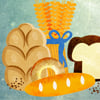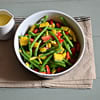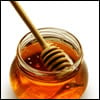Is Quinoa Grain?
During the holiday of Passover, the Torah prohibits us from owning or consuming any foods which are chametz or which contain it. Chametz is any food product made of wheat, barley, rye, oats or spelt, or their derivatives, which has leavened (risen) or fermented. Our sages have determined that flour from any of these five grains that comes into contact with water or moisture will leaven unless fully baked within eighteen minutes.
Quinoa is not one of these grains, nor is it related to any of these grains, and is therefore not considered chametz. (Botanically, it is a member of the goosefoot family, which includes beets and spinach.)
Nevertheless, there are two factors which must be taken into consideration with regards to consuming quinoa on Passover:
Is Quinoa Kitniyot?
1) Due to the gravity of the prohibition against chametz, the medieval Ashkenazic rabbis forbade the consumption of kitniyot (lit., “legumes”) on Passover, since they can be confused with the forbidden grains. This includes (but is not limited to): rice, corn, soybeans, stringbeans, peas, lentils, peanuts, mustard, sesame and poppy seeds. This ban was accepted as law by Ashkenazic Jewry.
While some kashrut organization take the position that quinoa need not be added to the kitniyot list, others hold that the prohibition of kitniyot applies to any legume-like produce whose cooked dishes or porridge appear similar to those dishes made out of grain. Accordingly, quinoa would be considered kitniyot.
2) Quinoa is often grown in close proximity to grains which can become chametz, such as barley. (Incidentally, this is one of the reasons given for the original kitniyot ban mentioned above.1) It is also often processed in the same factories as other grains, and the machines may not be adequately cleaned between runs of grain products and quinoa; both of these factors lead to a risk of chametz traces being found in the quinoa. Furthermore, the leading kashrut agencies have recently discovered that some farmers cover their quinoa with barley and/or oats to keep the birds from eating the quinoa while it dries, creating a concern that there may be grain kernels within the packaged quinoa. Finally, the sacks used to transport quinoa may have been previously used to hold barley or oats, which again raises the same concern.
Unlike the first, issue, these concerns can be mitigated through proper supervision.
What Is the Bottom Line?
In light of the above, if you are of Ashkenazic descent and therefore bound by the prohibition of consuming kitniyot on Passover, you should consult with your community rabbi as to whether to treat quinoa as kitniyot or not. And whether you are Ashkenazic or Sephardic, any quinoa would require kosher for Passover certification to ensure that it was carefully kept from contact with barley or other grains (covering all of the various scenarios described above in point 2), and it may be advisable to check the quinoa before Passover for any foreign matter (such as barley) before use, by placing the quinoa on a plate and looking through the grains.
Have a happy and kosher Pesach!








Join the Discussion